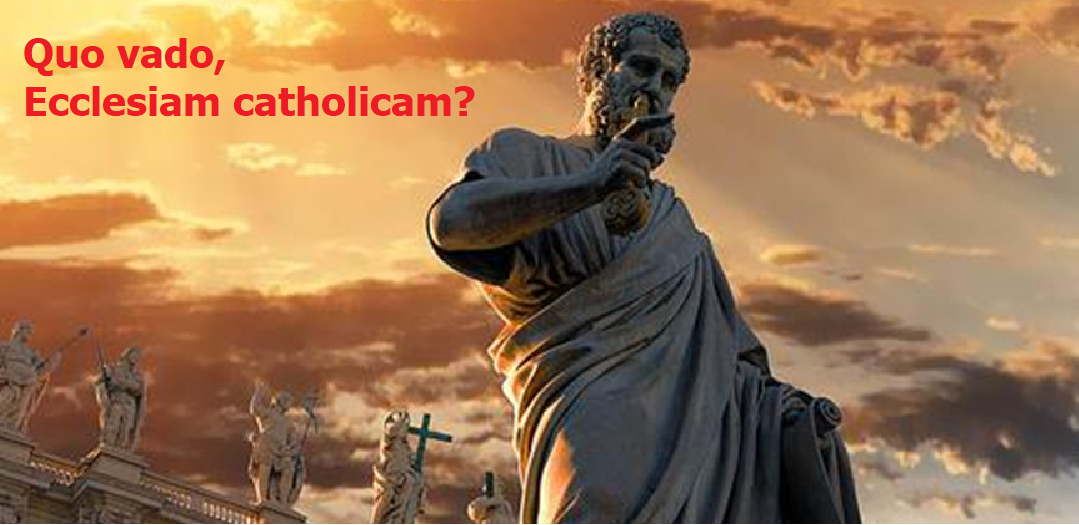 To the Catholic Church:
To the Catholic Church:
Where are you going?

October 16, 2018
I encourage you to listen to my church history podcast Triumphs and Tragedies. I’m not a historian by any stretch, and I’m afraid the podcast is more than rough around the edges. It was simply my attempt to give a quick roller coaster ride through twenty centuries of church history so that we can make better sense of where we are by understanding where we’ve come from.
One of the things you’ll gather is not only the history of the Catholic Church, but through that lens, a good overview of European history from the Roman Empire to the present day. The Catholic Church is the only institution from that time period that still not only survives, but thrives. Think about it!...
One of the interesting things that has come out of my research for the series is a 500 year pattern. I know we tend to impose patterns on things where they may not exist, but think about this pattern within Church history.
The first five hundred years is the Roman period. The Church grows, goes through persecution, then is established and the fortunes of the Church rise as the Roman Empire slowly crumbles.
The second 500 years are the Dark Ages. Europe drifts into chaos, anarchy and lawlessness. The barbarian tribes invade, but St Benedict establishes monasticism in the East, while the Celtic church is flourishing and sending out missionaries from the West. The hierarchy and papacy disintegrate in an ongoing war between what are essentially Italian crime families.
The third 500 years sees the great flourishing of Christendom. Monasticism blossoms, learning expands, universities are established, art and architecture flower into greatness. The Middle Ages enjoy a unity across Europe united in loyalty to a papacy that is growing in power, organization and domination of European civilization.
The fourth 500 years are are time of revolution. First the Protestant revolution, then the dissent and division of nation states, the English Protestant revolution, the French revolution, the revolution of rationalism, secularism and humanism and the American revolution. Then the industrial revolution, Russian revolution, Spanish, Mexican and Italian revolutions. Two world wars and finally the sexual revolution and technological revolution. These 500 years have been tumultuous, and they have sent the church reeling.
These last 500 years have seen the church struggling to cope with the revolutions of the modern world in a multitude of different ways, and the church’s reaction to Protestantism, rationalism, secularism, liberalism, modernism and all the other “ism’s” has sometimes been to pull up the drawbridge, man the battlements and attack from a position of defense.
The other approach has been the attempt to baptize what is good about the new ideas and embrace them as new insights into the wholeness of God’s truth.
That struggle – both to withdraw and defend, and the attempt to embrace and baptize the new insights – has been a long, hard,
beautiful[???] struggle.
But where are we now?
I believe we are at the end of a 500 year cycle and about to enter a New Age in the church. This means great uncertainty.
- Some respond by a blind attempt to return to an earlier age – preserving all the externals of a bygone Catholic age.
- Others respond in exactly the opposite way – by embracing everything new and adapting the church completely to the Spirit of the Age.
I believe the true answer is a balance of both approaches.
- Firstly, there must be a return not just to a form of Catholicism from some arbitrarily selected golden age, but a return to the core message and values of the gospel itself.
- The heart of the new age must be a return to the old, old story of God’s love for a fallen and wayward race, the surprise of his entrance into this world through the incarnation of his Son, and the redemption of the world through the blood of Christ.
This story is forever old, but it is never out of date. It is the story of Jesus Christ who is the same, yesterday, today and forever. This must remain the core of our message and life. The rest is window dressing.
At the same time we should be prepared for a Church in the twenty- first century which is young, alive and Southern (not the southern United States, but the world's southern hemisphere)
[generally used figuratively for the underdeveloped Third World]. John Allen’s book
The Future Church presents ten trends of the future – a Church in which many of our current concerns simply disappear as the young Churches of Africa, Asia and South America surge forth. This new 500-year cycle will see a truly global Catholic Church – one that has its roots in Europe and Rome, but which is now surging strongly in China, India, Africa and around the world.
If my predictions are accurate – and every trend suggests they are –then
the Catholic Church is on the cusp of huge changes which will not be brought about by some sort of reform movement or some manipulated synod about this or that. The changes will sweep away both the tired old liberalism of the West as well as the hide- bound traditionalist response.
In other words, the next 500 years will be exciting because God does not forsake his church, and while Jesus Christ is the same yesterday, today and forever, he is also the one who makes all things new. AMEN!!!